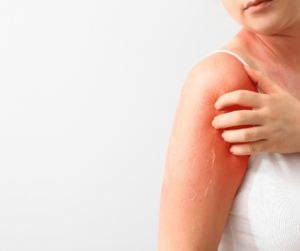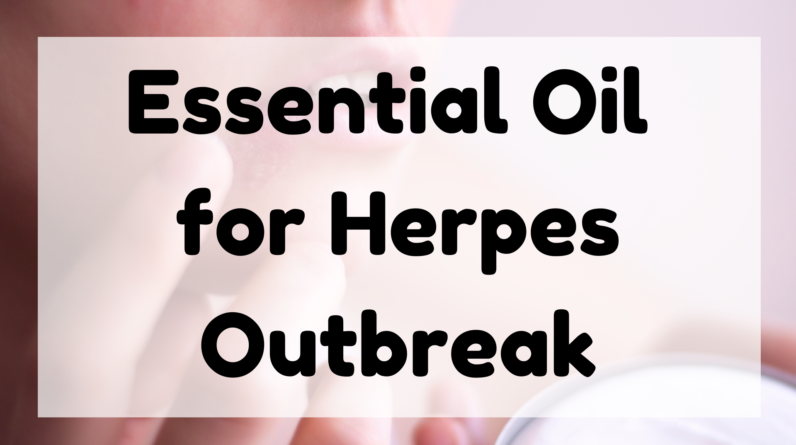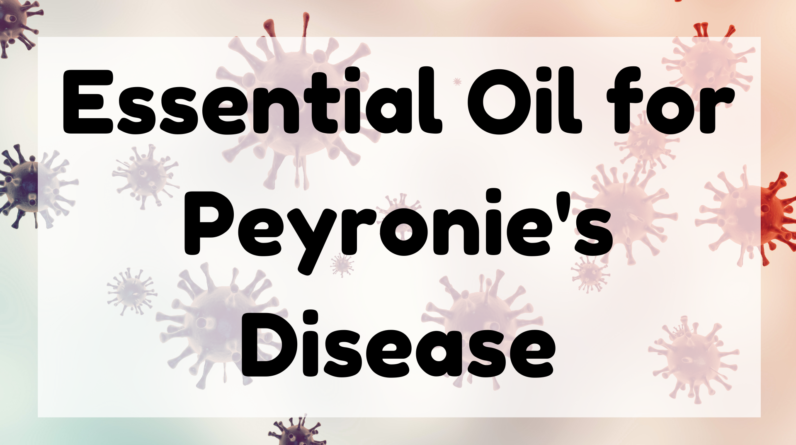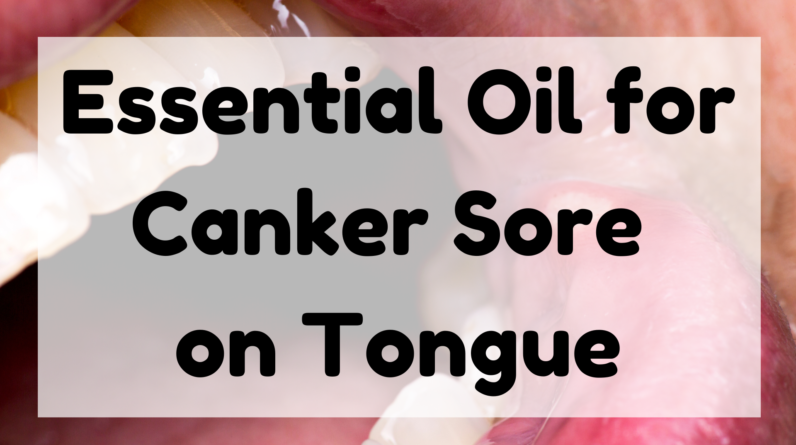Jump Ahead to:
Essential Oil For Skin Redness
If you suffer from skin redness, an Essential Oil for Skin Redness might be right for you.
In this article, you’ll learn about the benefits of essential oils, what they are used for, and how they can help treat your redness.
Also, we’ll discuss the common causes of skin redness and how to choose the best Essential Oil for Skin Redness.
What are Essential Oils
If you’re looking for a natural solution to skin redness and irritation, aromatherapy oils may be an excellent option.
Known for their soothing, antibacterial, and anti-inflammatory properties, essential oils can help soothe irritated skin and fight off flare-ups.
Essential oils are derived from plants and contain high concentrations of active ingredients.
When used properly and diluted, they are safe for skin care.
The most common adverse reaction to essential oils is contact dermatitis.
This occurs when people apply the oils directly to the skin or inhale them through the air.
In this case, a red, swollen, and itchy rash will develop.
The reaction may not be immediate and can occur hours, days, or even weeks after the application.
Nevertheless, if you develop this rash, you should stop using the essential oils.
Essential oils should not be used on the skin undiluted.
If you are prone to allergic reactions, you should consult a dermatologist or other health professional before applying an essential oil.
A few essential oils may cause allergic reactions, so always dilute them before use.
If you do notice a rash, it is best to stop using the product and wash the area thoroughly.
You can also apply a hydrocortisone cream or a cool compress to the skin.
Coconut oil contains fatty acids and is a great option for skin care.
Make sure you choose an organic version, as it will penetrate deeper into the skin.
In addition, coconut oil is antibacterial, so it can help prevent the growth of bacteria on the skin.
Avocado oil is another option, which is high in Vitamin E and antioxidants.
It is also useful for anti-aging.
Evening primrose oil is another oil that contains Vitamin E and is known to reduce skin redness.
Rose essential oil has anti-inflammatory qualities and can reduce skin redness and inflammation.
It is also used in homemade face masks.
It can be diluted in 2 ounces of water to create a soothing face mask.
Properties of Essential Oils

Essential oils are highly concentrated chemical compounds that are obtained from plants.
They are produced through cold-pressing or distillation and contain the essence of the plant.
They are more potent than common oils, and they require large amounts of plant material to be processed.
Carrier oils, on the other hand, are milder and are used to dilute essential oils.
Essential oils can be used topically or aromatically.
They should be diluted in a neutral carrier oil before applying to the skin.
Those with sensitive skin should perform a patch test on a small patch of skin to determine whether the essential oil is irritating or calming.
If it causes a reaction, don’t apply it to further areas.
Essential oils are potent and may cause skin irritation or allergic reactions.
To use them topically, you should dilute them with carrier oils such as olive oil or jojoba.
However, essential oils can be dangerous when exposed to UV light.
So it’s recommended to always test a small amount of the oil 24 hours before applying it to your skin.
Some essential oils have antibacterial, anti-inflammatory and soothing properties.
They can help a variety of skin types, including oily and acne-prone skin.
But you should consult a dermatologist before using essential oils on sensitive skin.
If you don’t know what essential oils do, read our Aromatherapy 101 course for a better understanding of the therapeutic effects of essential oils.
It also helps balance the skin’s oil production, which prevents it from becoming too dry or too moist.
Another essential oil that can help with skin discoloration is carrot seed oil, which is rich in essential fatty acids and antioxidants.
It helps to neutralize inflammation associated with dry skin and is a rich source of vitamin A.
The essential oils in peppermint oil can also help with skin rashes.
However, be sure to dilute the essential oil in a carrier oil first.
Cause of Skin Redness

Skin redness can be caused by many different reasons, from acne to exposure to irritants.
It can also be the result of a medical condition, such as psoriasis, a chronic illness, or an allergic reaction.
Some cases of redness are easily treatable, while others require immediate medical attention.
The first step in treating skin redness is to identify the cause.
If the cause is an infection, antibiotics may be prescribed.
However, if the condition is not infectious, other treatment options may be available.
Keeping the affected area clean and dry is also essential.
In addition, applying a cold compress to the affected area can reduce the pain and itching caused by the rash.
In addition to inflammatory conditions, other potential causes include environmental irritants, such as the sun and wind.
Chemicals in cleaning agents, detergents, and cosmetics may also irritate the skin.
Some of these chemicals can even strip the skin of its protective layer, leading to redness.
In addition to using calamine lotion or aspirin to soothe the affected area, you can also apply aloe vera gel to the affected area.
Coconut oil helps moisturize and reduce skin redness.
Also, you can reduce the redness by eating plenty of fruits and vegetables.
However, if the cause is infection, you might need to consult a dermatologist to get the proper treatment.
Your doctor may prescribe antibiotics or other prescribed medicines if necessary.
Sunburn is another common cause of skin redness.
The harmful UVA and UVB rays in the sun cause damage to the dermis.
This causes the body to send more blood to the affected area.
The resulting redness can be mild or severe.
In addition, sun exposure can exacerbate spider veins, especially in people with fair skin and sensitive facial skin.
If you suspect that your skin is allergic to a chemical, you should avoid using it.
A natural brand will have fewer ingredients, and may be easier to tolerate.
Natural products should also contain ingredients that help soothe the skin.
For example, tea, turmeric, and cucumber are good for sensitive skin.
Ingredients that trigger an allergic reaction should be avoided, including chemical fragrance, peppermint, and clove oil.
Cold compresses can also help reduce skin redness.
If you do not have the luxury of buying an expensive product, you can always use a washcloth frozen overnight in the refrigerator.
Best Essential Oil for Skin Redness
If you have red skin, essential oils can help soothe the problem and reduce inflammation.
Lavender essential oil is a great choice for skin that is red from rosacea and eczema.
You should apply it to the affected area with a carrier oil.
However, it should be used with caution as it is not approved for medicinal purposes by the FDA.
Another essential oil that is great for treating skin redness is Tamanu oil, which is anti-inflammatory and has antioxidant properties.
It can also be applied as a moisturizer over the affected area.
It also works well if you mix it with Aloe Vera to soothe your skin.
You can also try Borage seed oil, which contains gamma linoleic acid.
This oil should be diluted by a half or a third before applying.
Hazelnut oil is also a good option, since it is very rich in vitamins and minerals.
Essential oils are best used after conducting a patch test on an inconspicuous area.
To do this, wash your forearm with unscented soap and apply a small amount of diluted essential oil.
If you notice an adverse reaction, stop applying the essential oil to other parts of your body.
Geranium essential oil is another essential oil that can be used to treat skin redness.
Geranium is a powerful antioxidant and anti-inflammatory.
It can help soothe existing redness and eliminate bacterial overgrowth.
It has been used in natural beauty products for years and is great for sensitive skin.
When applying these oils, make sure to dilute them with a carrier oil.
This way, they can penetrate deeper into the skin’s dermal layer.
They can also help reduce inflammation and protect the skin from impurities.
Lastly, Rose and Jasmine Sambac Absolute are well-known for their ability to improve skin hydration and lighten redness.
NEXT Essential Oil for Iron Deficiency
Legal and Medical Disclaimer
Information provided on the site is for educational purposes only, and does not substitute for professional medical advice.
You MUST consult a medical professional or healthcare provider if seeking medical advice, diagnoses, or treatment.
We do not provide any medical advise.









